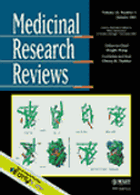
“Cannabinoid receptors are able to couple to different families of G proteins when activated by an agonist drug. It has been suggested that different intracellular responses may be activated depending on the ligand.
The goal of the present study was to characterize the pattern of G protein subunit stimulation triggered by three different cannabinoid ligands, Δ9-THC, WIN55212-2, and ACEA in mouse brain cortex.
Results show that, in mouse brain cortex, cannabinoid agonists are able to significantly stimulate not only the classical inhibitory Gαi/osubunits but also other G subunits like Gαz, Gαq/11, and Gα12/13. Moreover, the specific pattern of G protein subunit activation is different depending on the ligand.
In conclusion, our results demonstrate that, in mice brain native tissue, different exogenous cannabinoid ligands are able to selectively activate different inhibitory and non-inhibitory Gα protein subtypes, through the activation of CB1 and/or CB2 receptors.
Results of the present study may help to understand the specific molecular pathways involved in the pharmacological effects of cannabinoid-derived drugs.”









